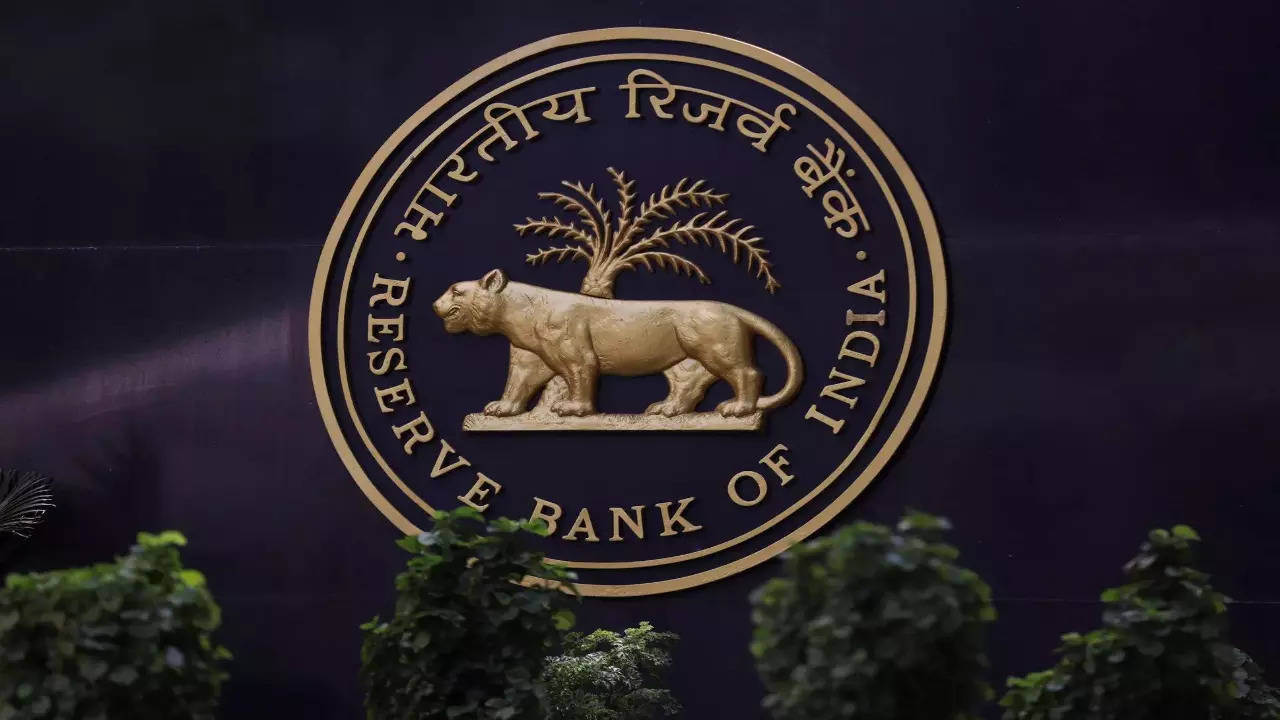[ad_1]
NEW DELHI: International Monetary Fund (IMF) has criticised Reserve Bank of India’s intervention in the foreign exchange market, hinting at attempts by authorities to influence the rate – a charge that was dismissed by the central bank, which said its foreign exchange intervention complies with best principles of transparency.
IMF’s Article IV Consultations report, released on Tuesday, shows there was sharp divergence of views on the exchange rate and foreign exchange intervention between IMF and authorities in India.
IMF has noted that during December 2022-October 2023, the rupee-dollar exchange rate moved within a very narrow range, “suggesting that forex intervention likely exceeded levels necessary to address disorderly market conditions”.
Forex intervention only to stem mkt volatility, says RBI in rebuttal to IMF
The report said, “The observed stability of the exchange rate prompted staff to reclassify India’s de facto exchange rate regime from ‘floating’ to ‘stabilised arrangement’ for that period, while the de jure classification remained ‘floating’.” It added that a flexible exchange rate should act as the first line of defence in absorbing external shocks.
Rebutting the IMF’s observation, RBI said that India’s exchange rate remained “market determined” and it did not target a particular value for the currency – a stand that it has had for years. In fact, RBI’s approach is to intervene in the market only to stem excessive volatility – which is to prevent a steep depreciation or appreciation in the value of the rupee – that can have wider implications for the economy. For instance, a sharp depreciation will fuel inflation as imports, including edible oil and petroleum, become more expensive. On the other hand, a sharp appreciation will hurt exports.
International Monetary Fund (IMF) holds an annual consultation with all its members to do a health check of the economies and their policies.
In October, at the annual meeting of the IMF and the World Bank, RBI governor Shaktikanta Das had come out all guns blazing on the issue, saying that market intervention should not be viewed in “black and white” and was more nuanced as emerging economies and developing countries have to deal with the consequences of policy actions in the developed world. For instance, a higher interest rate in the US results in a flight of capital from emerging markets, resulting in a steep depreciation of their currencies against the dollar.
“Our intervention is both ways, depending on market movement. Our objective is not to have a particular level (or exchange rate),” the governor said.
Asking agencies such as IMF to stop tagging countries, Das had said: “We have to get out of this one-sided approach to call someone a manipulator, or a stabilised currency or put on the watchlist. It’s a message to the IMF, so please review it.”
The tension over the issue was visible in the report with “directors encouraging staff and the authorities to resolve these differences”.
An IMF statement too pointed to the divergent position. “A few directors explicitly supported the authorities’ view that exchange rate stability reflects improvements in India’s external position and that foreign exchange interventions have been used to avoid excessive volatility not warranted by fundamentals,” it said.
IMF’s Article IV Consultations report, released on Tuesday, shows there was sharp divergence of views on the exchange rate and foreign exchange intervention between IMF and authorities in India.
IMF has noted that during December 2022-October 2023, the rupee-dollar exchange rate moved within a very narrow range, “suggesting that forex intervention likely exceeded levels necessary to address disorderly market conditions”.
Forex intervention only to stem mkt volatility, says RBI in rebuttal to IMF
The report said, “The observed stability of the exchange rate prompted staff to reclassify India’s de facto exchange rate regime from ‘floating’ to ‘stabilised arrangement’ for that period, while the de jure classification remained ‘floating’.” It added that a flexible exchange rate should act as the first line of defence in absorbing external shocks.
Rebutting the IMF’s observation, RBI said that India’s exchange rate remained “market determined” and it did not target a particular value for the currency – a stand that it has had for years. In fact, RBI’s approach is to intervene in the market only to stem excessive volatility – which is to prevent a steep depreciation or appreciation in the value of the rupee – that can have wider implications for the economy. For instance, a sharp depreciation will fuel inflation as imports, including edible oil and petroleum, become more expensive. On the other hand, a sharp appreciation will hurt exports.
International Monetary Fund (IMF) holds an annual consultation with all its members to do a health check of the economies and their policies.
In October, at the annual meeting of the IMF and the World Bank, RBI governor Shaktikanta Das had come out all guns blazing on the issue, saying that market intervention should not be viewed in “black and white” and was more nuanced as emerging economies and developing countries have to deal with the consequences of policy actions in the developed world. For instance, a higher interest rate in the US results in a flight of capital from emerging markets, resulting in a steep depreciation of their currencies against the dollar.
“Our intervention is both ways, depending on market movement. Our objective is not to have a particular level (or exchange rate),” the governor said.
Asking agencies such as IMF to stop tagging countries, Das had said: “We have to get out of this one-sided approach to call someone a manipulator, or a stabilised currency or put on the watchlist. It’s a message to the IMF, so please review it.”
The tension over the issue was visible in the report with “directors encouraging staff and the authorities to resolve these differences”.
An IMF statement too pointed to the divergent position. “A few directors explicitly supported the authorities’ view that exchange rate stability reflects improvements in India’s external position and that foreign exchange interventions have been used to avoid excessive volatility not warranted by fundamentals,” it said.
[ad_2]
Source link


